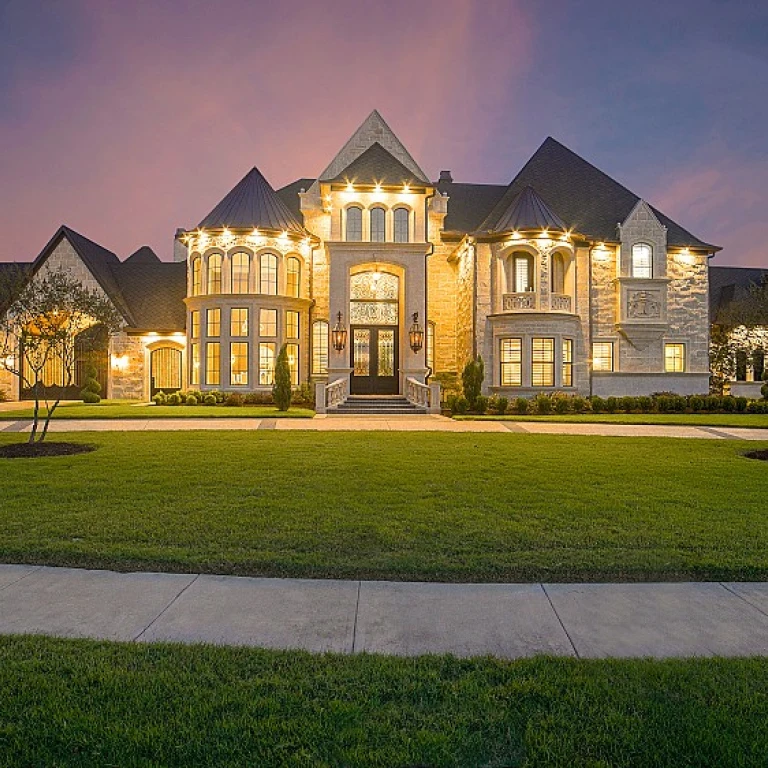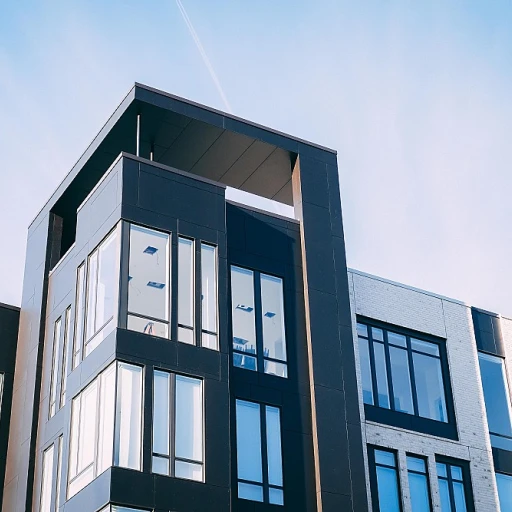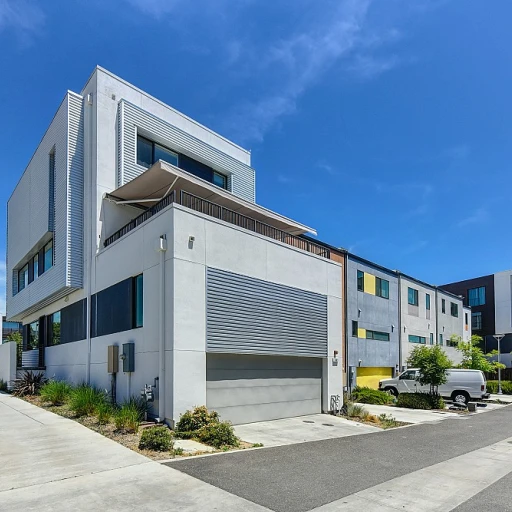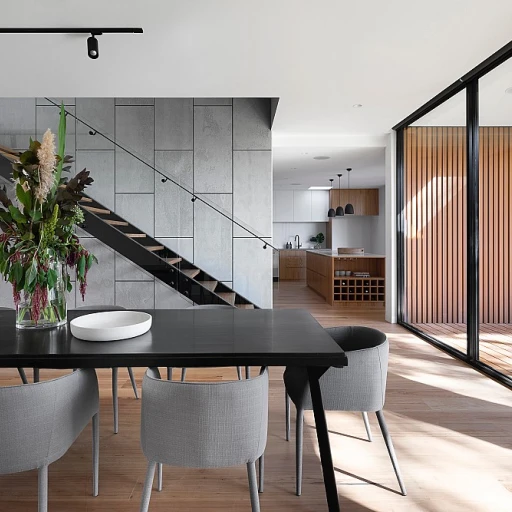
The Initial Acquisition Phase
Embarking on a Luxury Property Investment
Venturing into the high-stakes arena of luxury property flip houses requires a strategic approach starting with the initial acquisition phase. The first and foremost step in this real estate journey involves identifying a property with significant potential for appreciation. House flippers keen on luxury estates typically seek out homes located in coveted neighborhoods or properties that possess unique architectural qualities.
Securing a good purchase price for these exclusive homes is paramount. It lays the foundation for not only covering the renovation costs but also ensuring a lucrative return investment. The savvy estate investor often works closely with an estate agent who can provide in-depth knowledge about market trends, potential price growth, and the best-value investments within the local real estate market.
To mitigate financial risks, many investors leverage hard money loans to finance the initial acquisition. This can be particularly advantageous in competitive markets where time is of the essence. However, it also places an emphasis on effective planning for carrying costs throughout the lifecycle of the flip. Proper financial management and a keen understanding of interest rates can mean the difference between a successful house flipping venture and an arduous financial drain.
For those who are new to the estate investing scene, exploring essential tips for short-term rental success can offer valuable insights and help in developing a robust acquisition strategy.
Design and Renovation Challenges
Overcoming Renovation and Design Trials
When it comes to flipping houses, one of the most challenging stages is transforming the property through meticulous design and renovation efforts. The journey from acquiring a dilapidated house to selling a luxurious estate is fraught with challenges that require both creativity and strategic planning. Real estate investors need to keep several key aspects in mind to ensure a successful flip. First, aligning the renovation with potential buyers' tastes in the market is crucial. This involves staying updated on current design trends and understanding what high-end buyers value most. Carefully selecting materials and finishes that resonate with the target demographic can justify a higher selling price, making the investment worthwhile. In addition, managing renovation costs effectively can significantly impact the profit margin. Overspending on renovations could lead to reduced return on investment, making it vital for investors to strike a perfect balance between quality and affordability. Often, working with experienced contractors and designers can help in making sure the money is spent wisely. Another aspect that can influence the success of a house flip is the timeline for completing renovations. Delays not only increase carrying costs but can also lead to missed opportunities in a fluctuating estate market. Engaging with reputable contractors who understand the importance of sticking to deadlines is essential. This can help avoid unwanted expenses and capitalize on selling the property when the time is right. Additionally, securing the right tools and technology for project management can make a world of difference. Tools that facilitate planning, coordination, and execution of tasks contribute to ensuring a seamless renovation process, maintaining the project within the estimated time and budget. Dealing with these design and renovation challenges requires house flippers to be flexible, adaptable, and informed. Collaborating with leading real estate firms for guidance on market trends, best practices, and expert insights can provide the competitive edge required to succeed in the high-stakes world of house flipping.Navigating Permits and Regulations
Successfully Managing Building Permits and Adhering to Housing Regulations
Flipping houses is no small feat, especially when it comes to obtaining the necessary building permits and navigating the complex landscape of real estate regulations. This phase can be a significant hurdle for aspiring house flippers who might underestimate the time and attention to detail required in this part of the flip. Before you can even think about starting renovation work, it’s crucial to understand the specific requirements for your property location. Zoning laws, environmental regulations, and building codes can significantly impact the timeline of your house flip. These rules differ from one locale to another, often varying widely between nearby areas. Having a thorough grasp of these nuances not only saves time but also prevents costly fines or mandatory work redos. It's prudent to work closely with professionals who are familiar with these processes. An experienced estate agent or contractor who has dealt with flipping houses will be invaluable in accelerating the approval process. Their expertise can help streamline what can otherwise be a drawn-out ordeal, ensuring the renovation starts without bureaucratic delays. Another aspect that affects real estate flipping is the fluctuating interest rates and market conditions that can dictate the carrying costs incurred during the flipping process. But regardless of financial climates, adhering to the necessary legalities is non-negotiable. Delays and increased costs associated with non-compliance can diminish potential profit margins, turning what could have been a lucrative investment into a more challenging endeavor. Navigating the seas of building permits and regulations is part of the backbone of successful house flipping. For those looking to explore this further, the flexibility of a non-exclusive buyer representation agreement may offer additional insights into making savvy, informed real estate decisions.Marketing High-End Properties
Showcasing Brilliance: Effective Marketing for Exclusive Homes
Marketing a high-end property is a critical juncture in the house flipping journey. With luxury homes, appeal is in the details that make these properties unique and desirable. Estate agents specializing in exclusive estate properties play a pivotal role in crafting a narrative that resonates with potential buyers. To ensure success, here are a few key considerations:- Highlight Unique Features: Every luxury home has standout features that differentiate it from other houses on the market. Whether it's a state-of-the-art kitchen, stunning architectural design, or panoramic views, these aspects should be spotlighted in all marketing efforts.
- Engage Potential Buyers Through Visual Storytelling: High-quality visuals are indispensable for capturing the essence of a luxury property. Investing in professional photography and video tours can make a significant difference, enticing potential buyers by offering an immersive experience of the house.
- Diversify Marketing Channels: To reach the right audience, it's important to use a mix of marketing platforms. In addition to traditional real estate listings, consider platforms like social media, luxury real estate websites, and email campaigns targeted at high-net-worth individuals.
- Clarify the Value Proposition: Be transparent about the investment opportunity a luxury home presents. This includes detailing the property's purchase price, renovation costs, and expected return on investment. Highlight the potential for profit, emphasizing the exclusivity and prestige that comes with the property.
The Selling Process
Executing the Sales Strategy
Successfully managing the selling process in the realm of luxury house flipping involves various strategic components. The first crucial step is a comprehensive market analysis to determine an optimal sales price. This involves a thorough understanding of the local real estate market trends and comparable property rates. House flippers might aim for a price that maximizes profit while still appealing to potential buyers. Here, the goal is to strike a balance between a competitive listing and the ultimate return on investment. An estate agent with experience in high-end properties plays an essential role in marketing the house effectively. They will emphasize the exquisite design features and exclusive upgrades made during the renovation phase. Professional photos, virtual tours, and selective advertising to reach affluent buyers are part of a successful sales strategy. Throughout the selling process, acknowledging and planning for carrying and renovation costs remain imperative. These can accumulate over time, impacting the overall profitability of the flip. Hard money, often used in financing such projects, incurs significant interest rates, necessitating an efficient sales approach to reduce carrying costs. Navigating potential buyers through a luxury home involves not just showing the property but also telling its story – highlighting the craftsmanship, the estate's unique features, and the lifestyle it offers. This can foster a deeper connection with buyers and aid in closing the sale. Efforts to sell house properties swiftly are influenced by open communication, maintaining flexibility in negotiations, and understanding the community's pulse. The quicker the transaction closes, the higher the chances are of protecting the profit margins intended at the outset of the house flip. Ultimately, executing a well-rounded sales strategy is a cornerstone for the success of any estate investing venture, impacting both the time frame and money returned from the house flipping process.Factors Influencing Flip Duration
Balancing the Time and Profits in House Flipping
Flipping houses is a dance between time, money, and effort, all of which influence the duration of a property flip.- Understanding Market Dynamics: The real estate market is unpredictable. Changes in interest rates, local real estate trends, and potential buyer interest significantly affect how quickly a flip house can sell. Estate agents often keep a keen eye on these factors to time the sale for the best purchase price.
- Estimating Renovation and Carrying Costs: Renovation costs and carrying costs (such as mortgage payments, taxes, and utilities) add financial pressure to a house flipper. The longer it takes to flip the house and bring it to market, the higher these costs climb, directly impacting the profit margin.
- Labor and Resource Allocation: Good management of renovation work can streamline the flipping process. Coordinating skilled tradesmen and acquiring materials efficiently can help reduce time, ultimately leading to a quicker flip.
- Investment and Returns: Hard money loans might expedite purchases but come with additional costs. House flippers prioritize return investment calculations carefully to ensure profits outweigh expenses, influencing how fast they need to flip the house.












